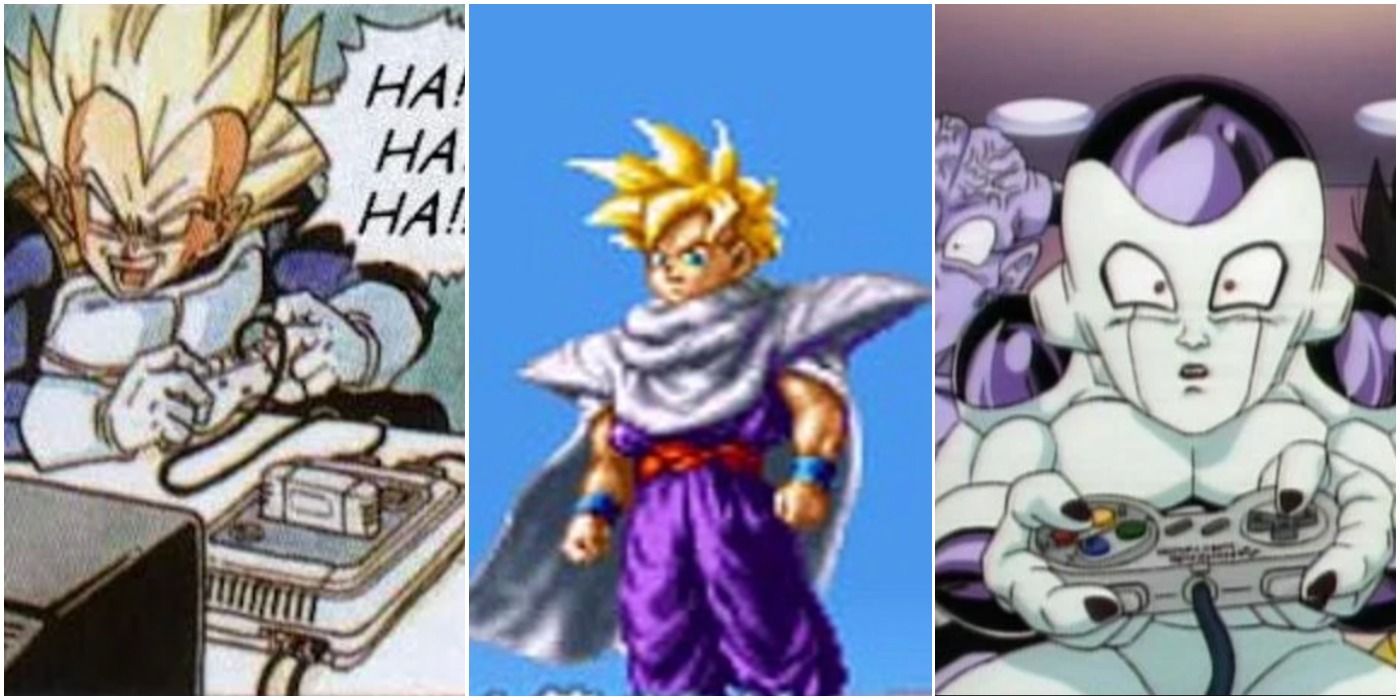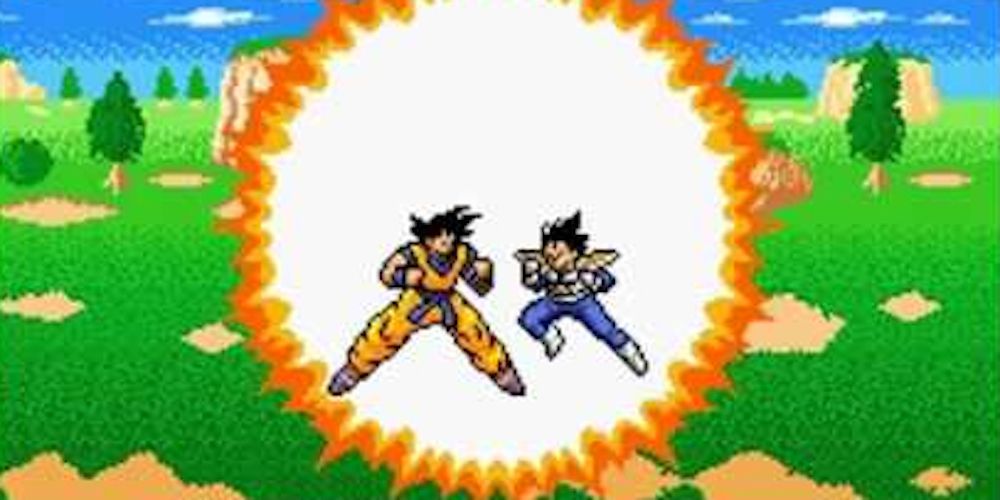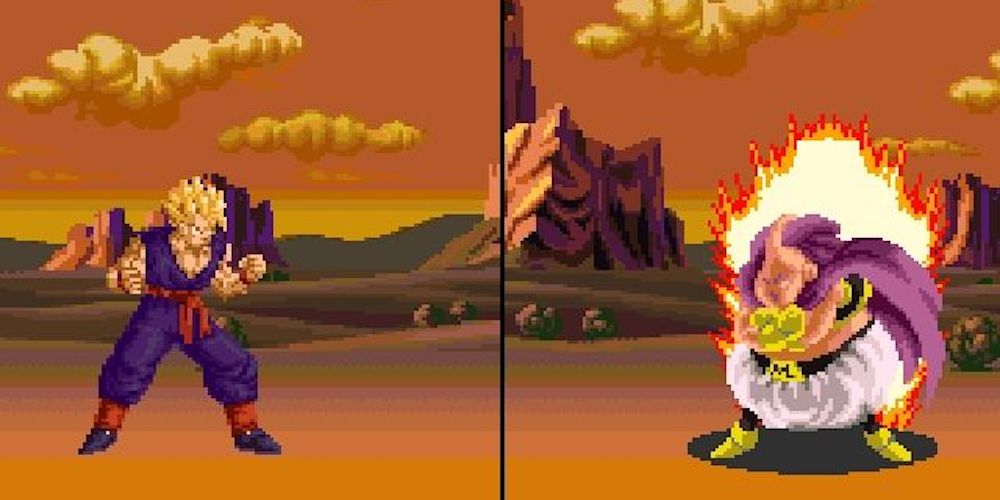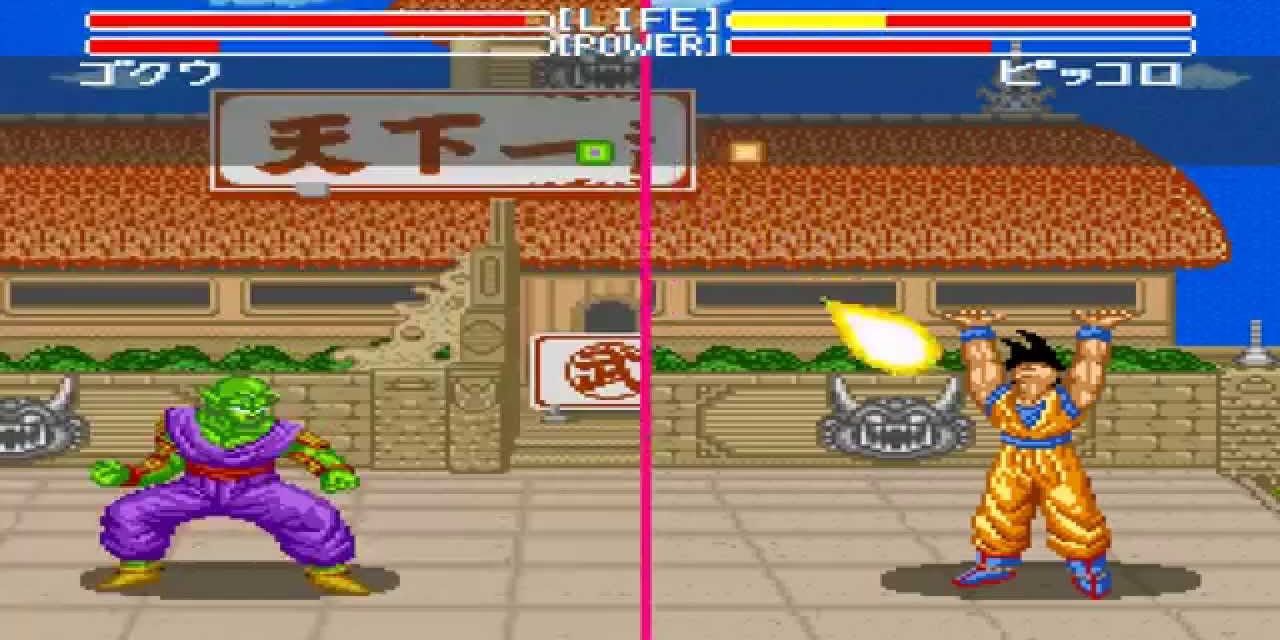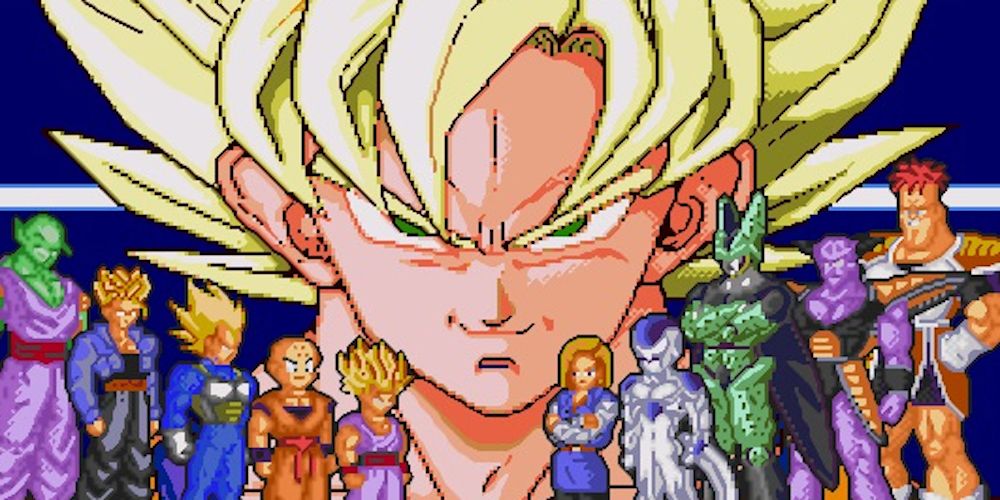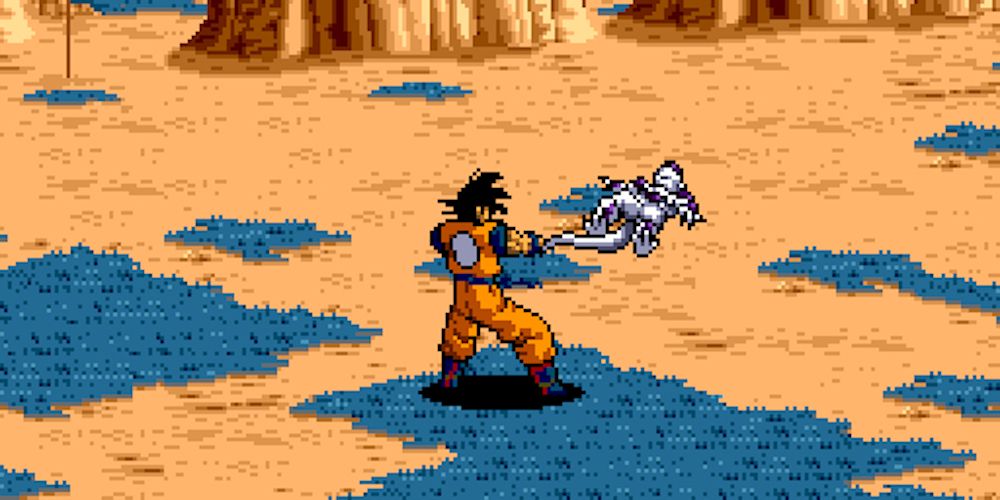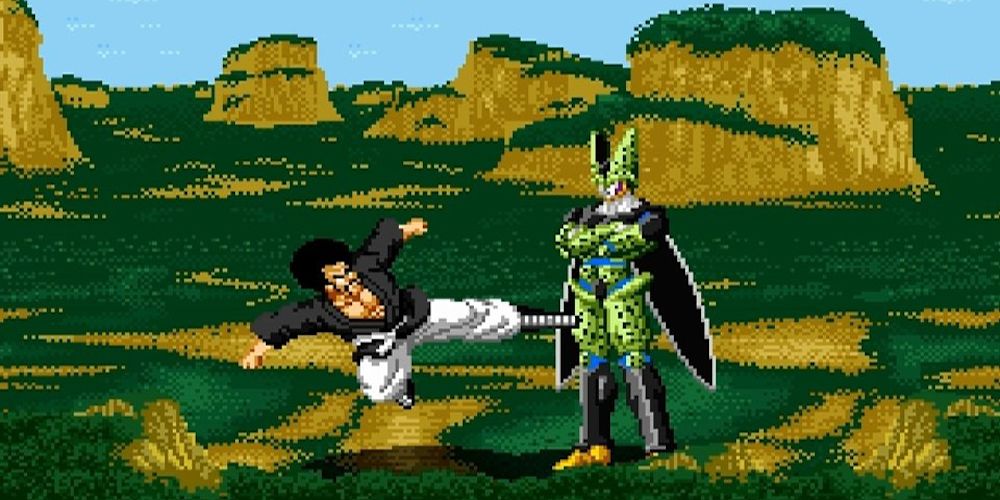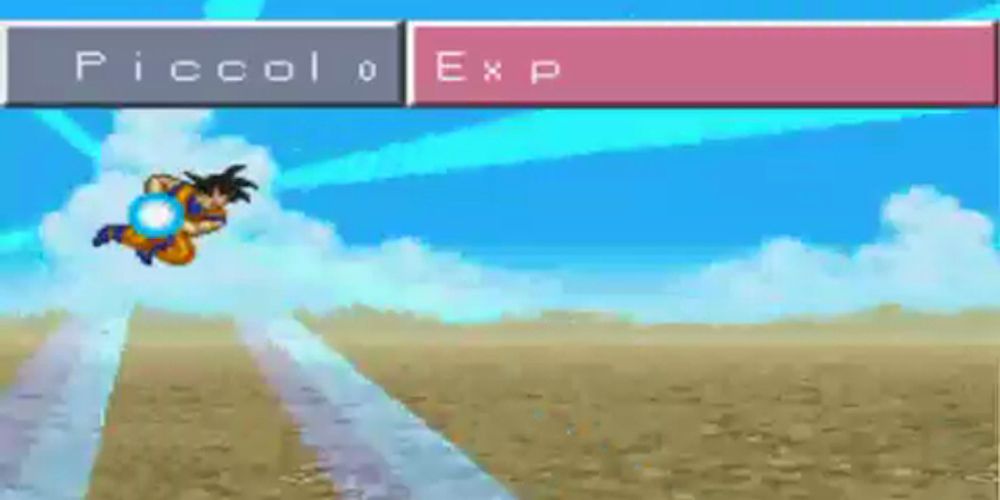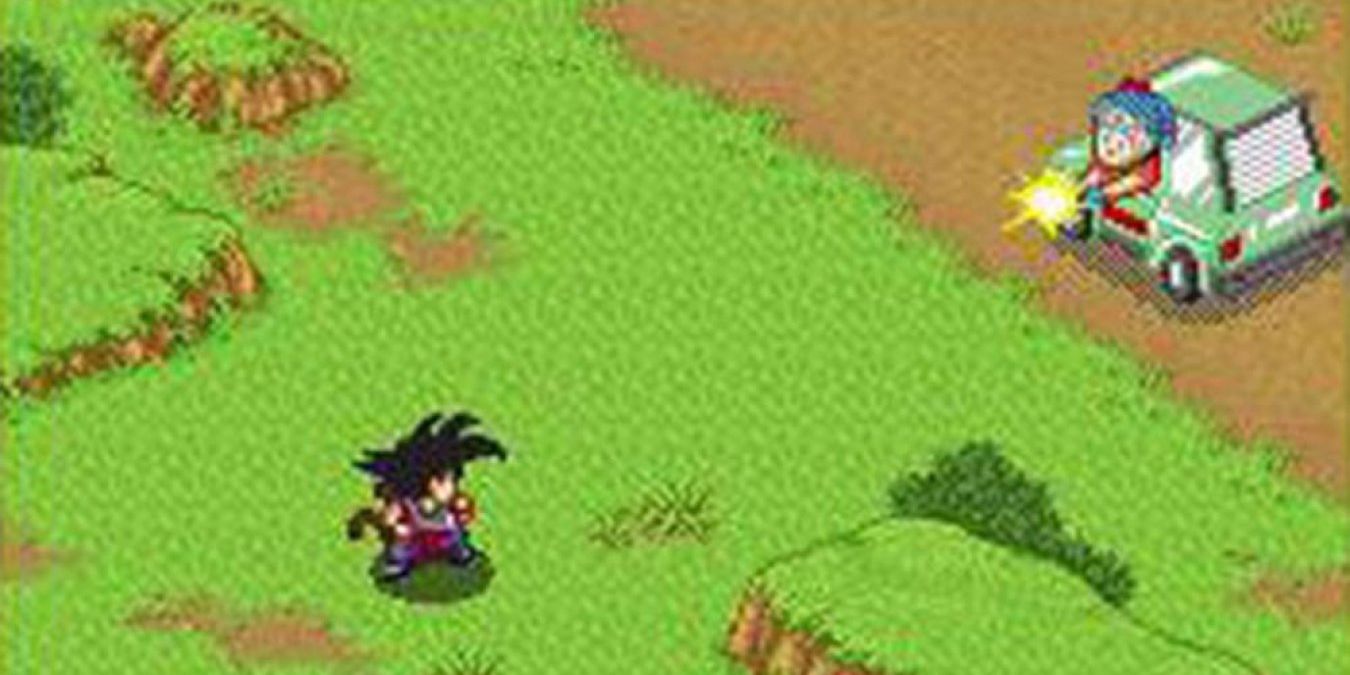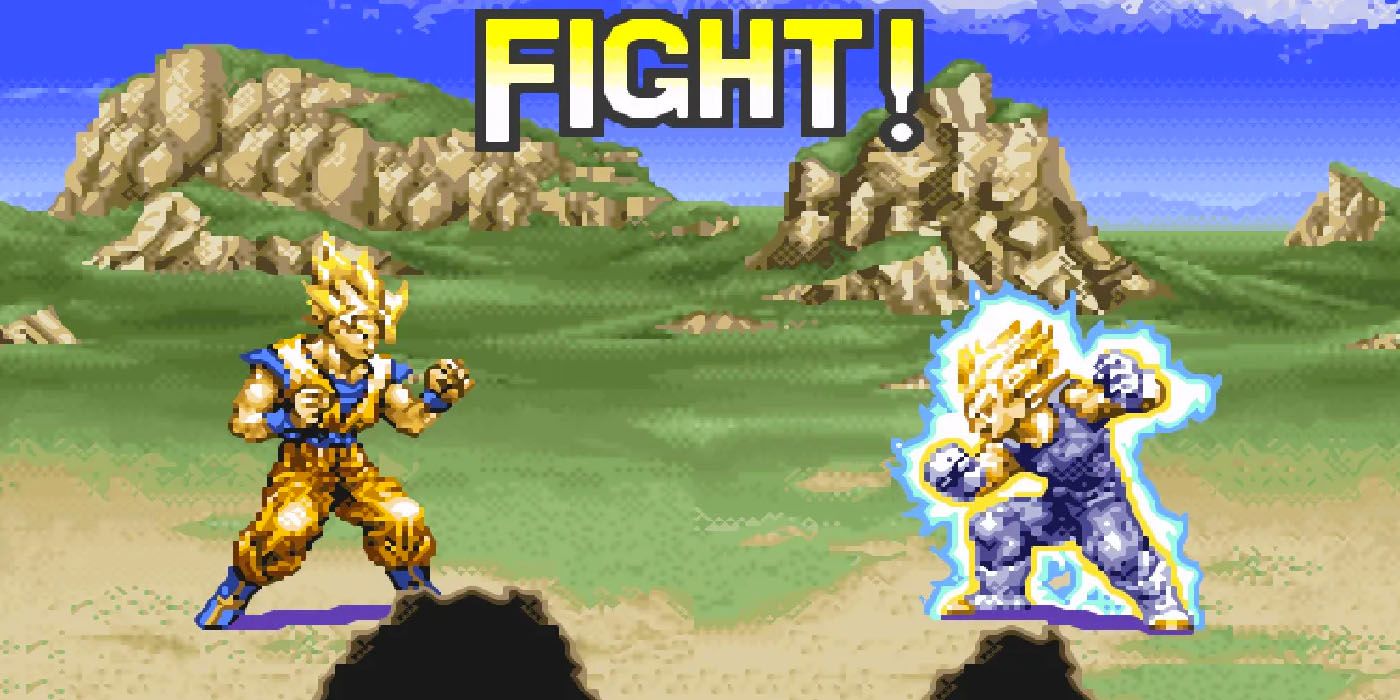Akira Toriyama’s Dragon Ball has been a leading title in the shonen genre for nearly four decades. Dragon Ball regularly engages in suspenseful showdowns and the scope continues to increase as Goku and company face more dangerous threats. The popularity of Dragon Ball’s anime and manga has helped the action series naturally transition over to the video game industry.
There are dozens of worthwhile Dragon Ball games and the most recent experiments truly tap into the spirit of the anime series. Audiences have never had more freedom when it comes to Dragon Ball games, but there is also a large portion of games from the 16-bit era that are all important in their own ways.
9 Dragon Ball Z: Super Saiya Densetsu Remakes NES Classics For A New Generation
Dragon Ball Z: Super Saiya Densetsu, also known as Dragon Ball Z: Legend of the Super Saiyan, is the first 16-bit Dragon Ball title for a Nintendo console. Super Saiya Densetsu is a clear upgrade from what was possible on the 8-bit Famicom releases, but it’s still a bit of a regressive release. Instead of telling a new story, Super Saiya Densetsu functions as a remake that combines together two earlier Dragon Ball Famicom games. Super Saiya Densetsu is a lengthy and satisfying adventure, but not the best reflection of what’s possible in the 16-bit era.
8 Dragon Ball Z: Super Butoden 3 Loses Its Story Mode & Nuance
It’s inevitable that the most successful fighting games devolve into a slew of sequels, which at a certain point naturally hit diminishing returns. Dragon Ball Z: Super Butoden 3 is the final 16-bit Butoden title, but it feels like a lazy step down from its predecessors. Butoden 3 only has ten characters on its roster and it’s the only game in the series to abandon the story mode. The new elements in Butoden 3 aren’t enough to justify a new sequel and the game’s rushed development (it came out less than a year after Super Butoden 2) is obvious.
7 Dragon Ball Z: Super Butoden Properly Translates The Series’ Combat To A 16-Bit Package
The Dragon Ball Z: Super Butoden series, also known as Dragon Ball Z: Super Fighting Story, is the signature 16-bit franchise. It first hit the Super Famicom in 1993 and helped usher in a higher standard and new gameplay mechanics that are still present in modern Dragon Ball games.
The first Super Butoden game is quite ambitious; its story covers Piccolo Jr.'s reign of terror in the original Dragon Ball all the way to the end of the Cell Games. Super Butoden also has the largest roster of the Super Nintendo Butoden games with 13 characters, which includes heavy Android representation.
6 Dragon Ball Z: Buyu Retsuden Gives Sega Fans A Sturdy Dragon Ball Fighter
Dragon Ball video games were most prevalent on Nintendo's Super Famicom during the 16-bit generation, but there's a solo entry for Sega's Genesis/Mega Drive that effectively translates the anime's heightened combat. Buyu Retsuden bears a lot in common with the two original Super Butoden games, but it's far from a port or remake. Buyu Retsuden is set during the Frieza and Cell Sagas and makes use of split-screen combat that can occur on land or in the air. Buyu Retsuden slightly pales in comparison to its Butoden counterparts, but stands out through a unique roster that includes members of the Ginyu Force, as well as Krillin.
5 Dragon Ball Z: The Greatest Son Goku Legend Takes Advantage Of TurboGrafx-16 Tech
Hudson Soft is a vital player in the video game industry, especially during the older generations, but it's still easy to forget that they produced their own first-party hardware in the form of the TurboGrafx-16/PC-Engine. Dragon Ball games were more common on Sega and Nintendo's alternatives, but the console still receives an original game, Dragon Ball Z: The Greatest Son Goku Legend. The unique fighting game has a creative structure where Gohan tells Goten about Goku’s greatest fights up until his death. Battles are confined to Goku’s signature fights, like Tao, Tien, King Piccolo, Vegeta, and Frieza. The game’s visual aesthetics are gorgeous and the gameplay doesn’t waste any time.
4 Dragon Ball Z: Super Butoden 2 Mixes Polished Controls With Inventive Storytelling
Dragon Ball Z: Super Butoden 2 is the middle entry in the 16-bit fighting franchise, but it fortunately doesn’t just go through the motions. Super Butoden 2 picks up from its predecessor’s Cell Games finale and works in villains from the eighth and ninth movies for good measure, like Bojack and Broly.
Dragon Ball Z: Super Butoden 2 refines its gameplay and begins to experiment with unique “What If?” storytelling. It’s also a refreshing change of pace that Goku isn’t one of the original ten characters and that he actually needs to be unlocked.
3 Super Goku Den — Kakusei-Hen Turns Goku’s Earliest Adventures Into A Complex RPG
The norm when it comes to 16-bit Dragon Ball video games is simple fighting games with limited story modes. This means that the two Dragon Ball Z: Super Goku Den games, which are robust RPGs, stand out as significantly more substantial experiences. The second of these two titles, Super Goku Den - Kakusei-Hen (Super Goku’s Story: Awakening Arc), details Goku’s adventures from his first encounter with Piccolo Jr. to when he finishes off Frieza. Awakening Arc adds Gohan as a playable character and features quizzes that cover events from the manga, which can result in contrasting story paths.
2 Super Goku Den — Totsugeki-Hen Adds To The RPG Formula With Fiercer Foes
Dragon Ball Z: Super Goku Den - Totsugeki-Hen (Super Goku’s Story: Assault Arc) is the first of two Dragon Ball RPGs for the Super Famicom. Assault Arc begins at the start of the original series and concludes with the defeat of Demon King Piccolo. This is a fairly succinct period of time, but the RPG mechanics and creative combat make Assault Arc a deep and satisfying experience. The 16-bit title even features a branching narrative and gameplay options way before it was the norm in Dragon Ball games.
1 Dragon Ball Z: Hyper Dimension Makes The Most Out Of The SNES’ Hardware
The 16-bit generation is full of Dragon Ball fighters, but Dragon Ball Z: Hyper Dimension benefits from being the final Dragon Ball game released for the Super Famicom. This luxury allows Hyper Dimension to learn from its various predecessors and it’s easily the best looking and intuitive of the 16-bit fighters. Hyper Dimension’s lengthy narrative spans from the Frieza Saga to the end of Dragon Ball Z. The story and fighting are satisfying, but Hyper Dimension incorporates multi-tier stages and a sophisticated life meter that adds even more to the intense action.

